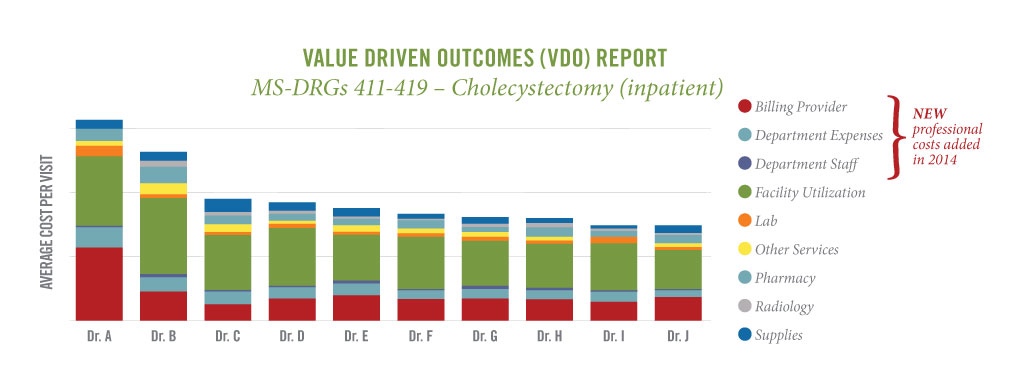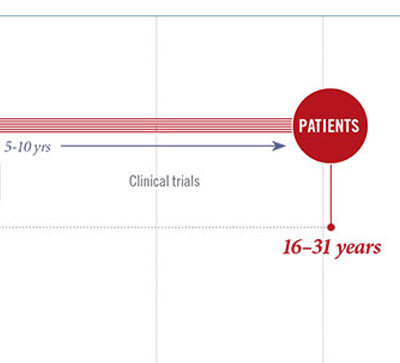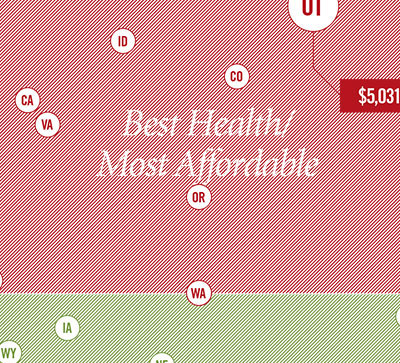What does it cost? Getting Granular
It’s hard to create a value-based health care system when you can’t figure out what your actual costs are, let alone map them back to a patient encounter. The ability to do that with accuracy and specificity has eluded health centers. Last year in Algorithms, we reported on a revolutionary tool we created that does just that. Called Value Driven Outcomes (VDO), it combines vast amounts of data from a wide range of sources, loads it into the data warehouse, organizes it and serves it up as a user-friendly, Web tool. Leadership can pull up charts, like the one below, see all of the providers who perform gall bladder removal surgeries for example, and then drill down to specific costs for labs, pharmacy, radiology, etc.
While VDO did a remarkable job with facility costs, there was an important piece missing – professional costs. Divining this isn’t as simple as calculating how much a provider is charging. You also need to know how much it costs to run that provider’s department, from copy machines to front desk and clinical staff.
The new challenge given to the VDO team this past year was: find a way to quantify and articulate those professional costs and tie them back to a patient encounter. Because academic departments also support research and education, parsing out clinical expenses is even trickier. Success required total cooperation from departments who were asked to assign all of their expenses to a mission: clinical, education or research. Departments at other institutions might balk at the intrusiveness of such a request, but our School of Medicine chairs had long ago established a centralized management system (see timeline below), so the tradition of tracking expenses by mission, and the tool to do it, were securely in place.
Now, when department leaders pull up a VDO chart, they find bars that correspond to facility fees, provider costs and department expenses. “This is just one more step toward our goal of becoming a value-driven organization and providing the best care at the lowest cost,” says Senior Vice President Vivian S. Lee, M.D., Ph.D., M.B.A., who championed the VDO tool. Lee points out that the reports are meaningless without input from providers. They’re the ones who bring the expertise to eliminate outliers and identify opportunities to redesign care. “VDO doesn’t give answers,” says Lee. “But it provides precise and accurate data to have the conversation.”






